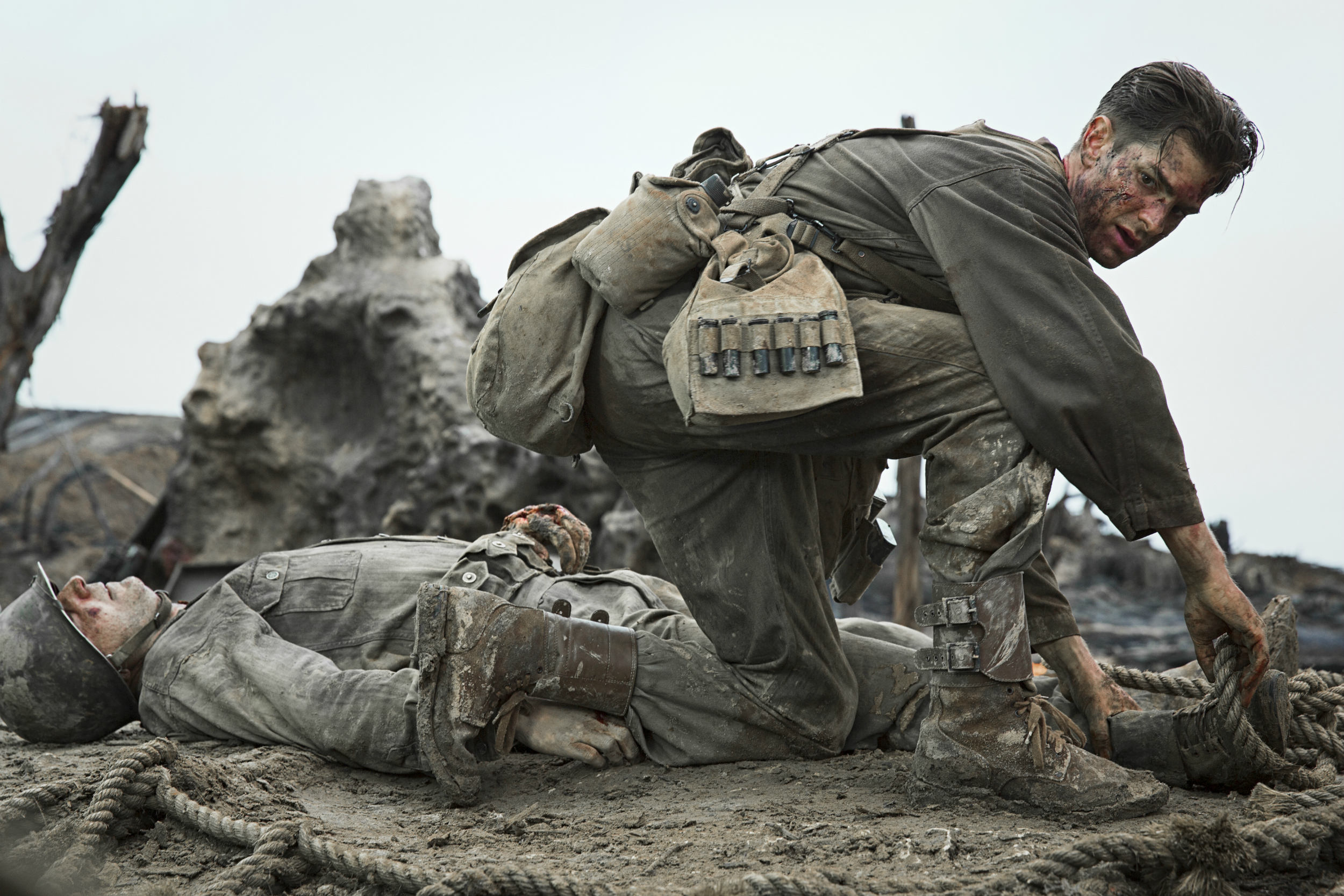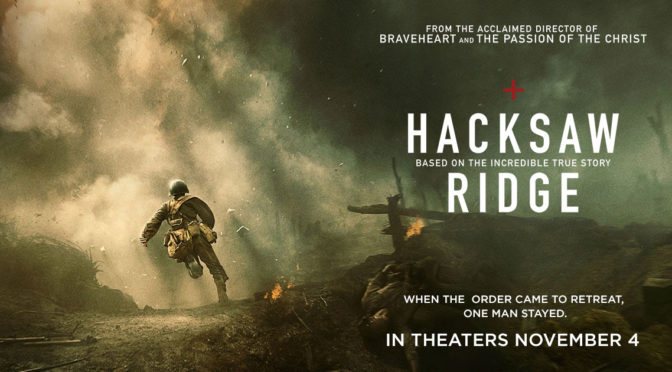Given the controversial remarks made ten years ago, it’s easy to forget who Mel Gibson really is. He is a talented actor (Mad Mqx) and has proven himself as a director as well (Braveheart). After being blacklisted for almost a decade, Gibson makes his return behind the camera with Hacksaw Ridge. The film covers the true story of Desmond Doss (Andrew Garfield; The Amazing Spider-Man), the first conscientious objector to win a medal of honor. Desmond is a deeply religious young man who grew up in Virginia with an abusive, alcoholic father (Hugo Weaving struggling to maintain a southern accent while displaying the slurred speech of a drunk; The Matrix). After WWII begins, Desmond joins the army with the goal of working as a medic. He refuses to touch a firearm, due to his religious beliefs, but is convinced he can still serve his country.
Gibson’s favorite themes of religion and duty provide the backbone to the film. Doss is almost a messiah-like figure. He encounters strong opposition during his difficult but surprisingly funny basic training. He is the model of morality and Gibson lays on the religious imagery thick. The camera circles around Doss as water cleans off the blood and dirt of battle in a blatantly Christ-like fashion. For some, the often hamfisted allegory will be upsetting.

Despite his saintly behavior, Doss never becomes preachy. Instead, he is portrayed as a lovable simpleton. He is the regular boy whose dumb grin and boundless faith and optimism will allow him to accomplish things any normal person would be too cynical to attempt. It only takes one interaction with a woman for him to go home and tell his mom that he has met his future wife. Garfield may sometimes push too far into Forrest Gump territory, but it’s hard to care when his attitude provides such a welcome contrast to the pessimism prevalent in his peers and most modern day characters. In a world where brooding has become the norm, Doss provides the counterargument that unwavering conviction can be just as involving.
The majority of the film takes place on the battlefield. Hacksaw Ridge itself is littered with dead bodies, dugouts, and fortified caves, the Japanese use for cover. Gibson manages to balance the scale and chaos of the larger battle with the intensity of a single soldier’s fight. As guns are fired and bombs explode, the camera never turns away from the damage. Blood splatters and limbs fly leaving behind bloody stumps. Even as the film rapidly cuts between action, the fighting is never disorienting. The danger is intense and every moment holds potential disaster.
Gibson has never been a cerebral filmmaker; his intentions are always emotional. During Doss’s objection, Gibson never explores the morality of violence during war. There are brief mentions of extenuating circumstances, but he is more interested in the impact that one’s beliefs can have on themselves and others. The strength of Doss’s faith gives his fellow soldiers something to latch onto. As their world literally explodes around them, his belief in God is the one constant they can depend upon. It allows them to overcome the illogical act of returning to a battlefield. Gibson uses Doss’s story to show how spiritual conviction can conquer even extreme situations.

4/5 stars.
